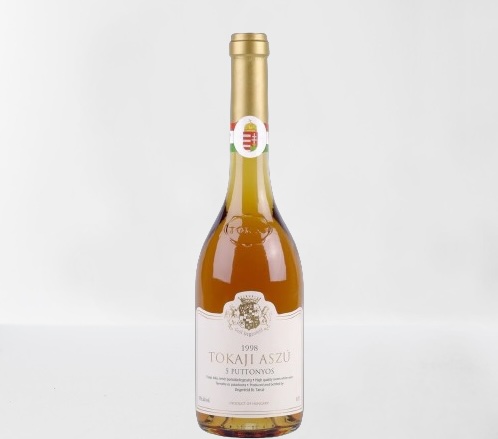Nestled in the northeastern part of Hungary, the Tokaj wine region is renowned worldwide for its exquisite sweet wines, with Tokaji Aszú standing out as the crown jewel. Often referred to as “liquid gold,” Tokaji Aszú is a wine steeped in history, tradition, and unparalleled craftsmanship. In this blog post, I’ll share my experience of discovering Tokaji Aszú’s magic, from its storied past to its complex flavors and unforgettable tastings.
Discovering Tokaji Aszú
A Historical Prelude
My journey into the world of Tokaji Aszú began with a visit to the picturesque Tokaj wine region, a UNESCO World Heritage site. The area’s winemaking history dates back to the 12th century, but it was in the 17th century that Tokaji Aszú gained prominence. This wine became a favorite among European royalty and nobility, earning accolades from the likes of Louis XIV of France, who famously called it “the king of wines and the wine of kings.”

The Unique Terroir
The magic of Tokaji Aszú lies in the region’s unique terroir. The combination of volcanic soil, the confluence of the Tisza and Bodrog rivers, and the region’s microclimate create the perfect conditions for noble rot (botrytis cinerea) to thrive. This fungus shrivels grapes and concentrates their sugars, making it crucial to the production of Tokaji Aszú.
The Art of Making Tokaji Aszú
Harvesting the Aszú Berries
Witnessing the harvest of Aszú berries was an eye-opening experience. These botrytized grapes are painstakingly hand-picked, one by one, to ensure only the best berries are used. It’s a labor-intensive process that underscores the dedication and meticulous care that goes into making Tokaji Aszú.
The Vinification Process
After the harvest, the Aszú berries are mashed into a thick paste and added to a base wine made from non-botrytized grapes. This mixture is left to macerate for several days to extract the rich flavors and sugars from the Aszú paste. The amount of Aszú paste added determines the sweetness level of the final wine, measured in “puttonyos,” a traditional Hungarian unit ranging from three to six puttonyos, with six being the sweetest.
Aging in Cellars
Tokaji Aszú wines are then aged in barrels made from Hungarian oak, often stored in the region’s extensive network of underground cellars. These cellars provide the perfect conditions for aging, with constant cool temperatures and high humidity. The aging process can last several years, allowing the wines to develop their complex flavors and rich, golden color.
Tasting Tokaji Aszú
A Symphony of Flavors
My first taste of Tokaji Aszú was nothing short of magical. The wine presented a stunning array of flavors, from dried apricots and honey to orange peel and spices. Each sip revealed new layers of complexity, with a perfect balance of sweetness and acidity. The finish was long and elegant, leaving a lasting impression that beckoned for another taste.
Food Pairings
One of the highlights of exploring Tokaji Aszú was discovering its versatility in food pairings. The wine’s natural sweetness and acidity make it a fantastic companion to a variety of dishes. I enjoyed it with rich blue cheeses, foie gras, and decadent desserts like fruit tarts and crème brûlée. Each pairing enhanced the flavors of both the wine and the food, creating a harmonious dining experience.
Visiting the Tokaj Wine Region
Wine Tours and Tastings
To fully appreciate Tokaji Aszú, a visit to the Tokaj wine region is a must. Many vineyards and cellars offer tours and tastings, providing an immersive experience into the world of Tokaji winemaking. I visited several renowned wineries, including Disznókő and Royal Tokaji, where knowledgeable guides shared the history, techniques, and passion behind their wines.
Local Festivals
If you’re lucky enough to visit during harvest season, don’t miss the Tokaj-Hegyalja Harvest Festival. This lively event celebrates the grape harvest with music, dance, and plenty of wine tasting. It’s a wonderful opportunity to immerse yourself in the local culture and enjoy the vibrant community spirit.
The Legacy of Tokaji Aszú
A Royal Favorite
Tokaji Aszú’s illustrious history includes being a favorite of many European royals and dignitaries. Its esteemed reputation was further solidified when it became the first wine in the world to be classified, with a royal decree in 1737 defining the Tokaj region and its wines. This recognition highlighted the exceptional quality and uniqueness of Tokaji Aszú.
Modern Appreciation
Today, Tokaji Aszú continues to be celebrated by wine enthusiasts worldwide. Its complexity, elegance, and rich history make it a prized addition to any wine collection. Whether you’re a seasoned connoisseur or a curious newcomer, Tokaji Aszú offers an educational and satisfying tasting experience.
Conclusion
Exploring the world of Tokaji Aszú has been a journey of discovery and delight. From its historical roots and unique terroir to meticulous craftsmanship and exquisite flavors, Tokaji Aszú embodies the very essence of winemaking excellence. Whether you’re savoring it in the heart of the Tokaj region or enjoying a glass at home, Tokaji Aszú is sure to captivate your senses and leave a lasting impression.
Raise a glass of this liquid gold and toast to the rich heritage and bright future of Tokaji Aszú, a true gem in the world of wines.